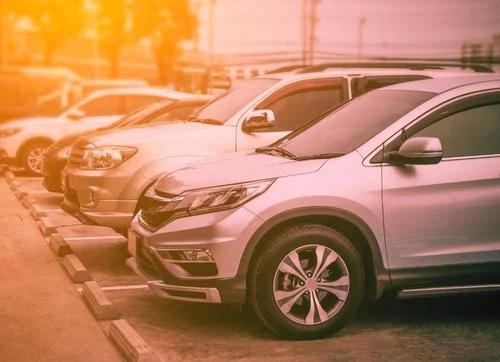A Guide For Instant Asset Write-Off

One of the most important things that every business owner should keep in mind is how to make the most out of their tax deductions.
And what better way to start the year than by learning about Instant Asset Write-Off in 2025
Don’t worry; we won’t bore you with complicated terms and financial jargon!
Instead, we’ll break it down for you in an easy way, so you can stay on top of the latest trends and make informed decisions for your business.
If you are looking for assistance with finance for a vehicle or asset before the end of the financial year contact us today!
Eligible Assets for Instant Asset Write-Off
The instant asset write off (IAWO) is a tax deduction that allows eligible small businesses to immediately write off the business portion cost of purchased assets in the year first used or installed ready for use for business purposes.
The scheme is designed to help small businesses invest in assets that can help them grow and improve their productivity. By immediately deducting the cost of these assets, businesses can reduce their taxable income and improve their cash flow.
To be eligible for the IAWO scheme, your business must have an aggregated turnover of less than $500 million. Additionally, the asset must meet the following criteria:
- It must be new or second-hand but unused by anyone else
- It must be purchased and used or installed ready for use
- It must cost less than the threshold for the relevant financial year. The current threshold is $150,000, and it applies to assets purchased and used or installed ready for use. For assets purchased before this period, the threshold is lower. See the table below for more details.
In summary, the IAWO scheme allows eligible small businesses to immediately write-off the cost of eligible assets purchased and used or installed ready for use for their business purposes.
To be eligible, the asset must meet certain criteria, including being new or second-hand but unused by anyone else, costing less than the threshold for the relevant financial year, and not being one of the excluded assets.
Second-Hand and Existing Assets Eligibility for Instant Asset Write-Off
Second-hand assets can be eligible for the instant asset write-off, provided they meet the eligibility criteria.
The instant asset write-off allows small businesses to claim an immediate deduction for the cost of eligible assets in the year they are purchased rather than depreciating the cost over several years. sole trader instant asset write off is the same as well.
To be eligible for the instant tax write off 2022, the eligible assets costing must be:
- -Cost less than the threshold amount: Currently, the threshold amount is $150,000 (up to 30 June 2023).
- Be used or installed ready for use in the income year you are claiming it.
Regarding existing assets, if you’ve already owned an asset and have been using it for personal purposes, you can still claim an instant asset write-off for the portion of the asset’s use that is for businesses purposes.
For example, if you have a personal car that you start using for Australian businesses, you can claim the instant asset write-off for the portion of the car’s use that is for business purposes.
It’s important to note that not all assets are eligible for the instant asset write-off. For example, assets leased to another party or used solely for earning rental income are generally not eligible.
It’s always advisable to consult with a tax professional or accountant to determine whether a particular asset is eligible for the instant write off for individuals to ensure that you comply with all relevant tax laws and regulations.
Qualification of Sole Traders and Small Businesses for Instant Asset Write-Off
In Australia, the instant asset write-off scheme allows eligible businesses to immediately deduct the cost of eligible depreciating assets, up to a specified threshold. This incentive is aimed at supporting business investment and cash flow.
As of 2025:
Under the 2024–25 Federal Budget, the government extended the $20,000 instant asset write-off threshold for small businesses with an aggregated turnover of less than $10 million. This applies to eligible assets first used or installed ready for use between 1 July 2023 and 30 June 2025.
Key points:
Businesses not using simplified depreciation (including those with turnover between $10 million and $500 million) are not eligible for the $20,000 instant write-off and must use general depreciation rules.
The instant asset write-off threshold is $20,000 per asset.
Multiple assets can be written off, as long as each individual asset costs less than $20,000.
Assets must be used for business purposes and must be first used or installed ready for use within the same income year the deduction is claimed.
The write-off applies only to businesses using the simplified depreciation rules, which are available to businesses with turnover under $10 million.
It’s worth noting that not all assets are eligible for the instant asset write-off. For example, assets that are leased out to others, or assets that are used for private purposes, are not eligible. It’s important to check the eligibility of the assets valued before claiming the deduction.
Instant Asset Write-Off Criteria: Installed and Ready for Use
The criteria for claiming an instant asset write-off include having the asset installed and ready for use. It is important to note that the asset must be acquired before the end of the financial year (30 June) in order to claim the instant asset write-off.
Working Out the Business Portion of Assets for Proper Instant Asset Write-Off Claims
To claim an instant asset write-off, it is important to work out the business portion of the assets accurately. This means determining the percentage of the asset’s use for business purposes.
For example, if you purchase a new car for your business but also use it for personal trips, you will need to calculate the percentage of time the car is used for business purposes versus personal use. You can use logbooks, odometer records, or other documentation to determine the business use percentage.
Once you have determined the business use percentage, you can apply it to the cost of the asset to calculate the deductible amount for tax purposes. This will ensure that you are only claiming the instant asset write-off for the business portion of the asset and not for personal use.
Claiming Multiple Assets
When claiming an instant asset write-off for multiple assets, it is important to consider the annual aggregated turnover threshold. The annual aggregated turnover is the business’s total income, including any business income and any other income earned.
Multiple assets can be claimed under the instant asset write-off scheme for businesses with an annual aggregated turnover of less than $500 million. The cost of each individual asset must be less than the instant asset write-off threshold, which is currently $150,000.
However, if the cost of any individual asset exceeds the instant asset write-off threshold, it cannot be claimed under the instant asset write-off scheme. Instead, it will need to be depreciated over its useful life.
Writing Off Small Business Pool for Depreciation
You can write off your small business pool, which is a way of grouping assets together to make it easier to depreciate them if you have a lot of assets.
When you have multiple assets, you can group them into a pool and claim a deduction for the depreciation of the entire pool rather than individually calculating the depreciation of each asset. This is known as the small business pool.
The pool balance is calculated at the end of each income year, and the deduction for depreciation is based on the pool balance. The depreciation rate for the pool is 15% in the first year and 30% in each subsequent year.
When you dispose of an asset in the pool, you will need to reduce the pool balance by the written-down value of the asset. If the pool balance falls below $1,000, it can be written off in the current income year.
Car Limit for Tax Deductions (2025)
In 2025, there’s a cap on how much you can claim as a tax deduction for a car used in your business. This is called the car limit, and it’s set by the ATO each year.
For the 2024–25 financial year, the car limit is $68,108. This is the maximum you can claim as a deduction for the cost of a passenger vehicle, even if the car costs more.
What counts as a luxury car?
If a car costs more than the luxury car tax (LCT) threshold, it’s considered a luxury vehicle for tax purposes. For 2024–25:
- Fuel-efficient cars (less than 7.0L/100km): LCT threshold is $91,387
- Other cars: LCT threshold is $76,950
You can’t claim GST or depreciation above these thresholds.
What about utes and work vehicles?
Good news: commercial vehicles like utes and trucks that are mainly used for work aren’t subject to the car limit or luxury car tax rules. You can generally claim the full business-use portion of these, even if they cost more than the limit.
This article hasn’t taken into account your individual circumstances, for example outstanding tax statements lodged will be a different situation. It is best to consult a tax Business Accountant before making any decisions with tax. Contact one of our tax accountants!


